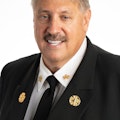Another fire chief and I were having a conversation about how much the fire service has an impact on EMS. He said that during a recent meeting with business leaders, he had mentioned that his fire department is one of the largest health providers in the community. With 24 fire stations and doing first response for the local private ambulance company, the department delivers healthcare from 24 different sites in the community.
Of course, the CEOs and other high-ranking health officials from the various hospitals who were in attendance raised their eyebrows, but they could not disagree with him.
As we talked further, we wondered what would happen if fire departments across the United States suddenly said, “We’re out of the EMS business.” What would happen if the fire service stopped doing transports and providing first-response service?
Not everybody likes us
Of course, some would love it. There are fire haters out there who loathe the fact that firefighters deliver emergency medical care through first response and transport or both. They react strongly whenever the word “fire” is attached to anything related to EMS or when they think of a firefighter starting an IV or intubating.
Several years ago, I was on an oversight committee for an East Coast fire department addressing EMS issues. A physician who was on the committee commented that, “It is ridiculous to think that a firefighter can possibly do medicine.” Of course, he got an earful from me. Another person once said he “never saw a cross-trained, dual-role surgeon.” I told him I had. In fact, I said, I’ve seen physicians who are board certified as surgeons and toxicologists or other specialties – and some physicians I know even are licensed to fly planes. I said I never knew that human beings are limited to be proficient at only one thing in life.
Aside from the fire haters who would be happy if the fire service got out of EMS, I am sure the owners of private ambulance companies would see opportunities to step in and fill the void. The only problem is that they would have to staff and equip many more ambulances than they normally do because the fire service would not be doing first response. If the private ambulance owners had to staff and equip many more ambulances, it would cut into their profits or else they would have to get more money for their 911 service.
If the fire service across the United States suddenly decided to get out of doing EMS, the impact would be dramatic. If you look at the 20 most populous cities in the United States, the fire service provides EMS transports in 16 of them. In the other four cities; the fire service provides first response to all the EMS transport providers.
Another reflection of how much of an impact there would be if the fire service suddenly got out of the EMS business is the National EMS Assessment that was released in December 2011. That report, authorized by several federal agencies, shows that the fire service is the largest provider of EMS in the country. A chart that breaks down EMS agencies by organizational type reflects that 40%, or 6,388, of all EMS agencies are fire-based EMS. That is the highest among all categories. The next-closest categories are private ambulance services that are not hospital based at 25% (3,910) and government agencies that operate EMS that are not fire-based at 21% (3,255). This information did not include data from California, Illinois, Virginia and Washington – all of which I think would have made the fire-based EMS percentage higher.
Even though the fire service is the largest provider of EMS transport in the United States, it would be interesting to see how many government and private ambulance services rely on the fire service to provide EMS first response. Unfortunately, the study did not go that far.
Of course, the fire service is not about to get out of providing EMS. In fact, more and more communities are moving toward fire-based EMS systems. It is the rare community that tries to move away from its fire-based EMS system.
The fire service has a long and distinguished history of providing ambulance service and EMS to the communities we serve. After all, the country’s first six paramedic systems involved physicians training firefighters to do advanced medical procedures in the field before patients arrived at hospitals.
For more news and training on EMS, visit http://EMSWorld.com/.
GARY LUDWIG, a Firehouse® contributing editor, has 35 years of fire, rescue and EMS experience. He currently serves as a deputy fire chief for the Memphis, TN, Fire Department. Ludwig is also chair of the EMS Section for the International Association of Fire Chiefs. He can be reached through his website at garyludwig.com.
About the Author
Gary Ludwig
GARY LUDWIG has served in three fire departments over his career: St. Louis, Memphis, and Champaign, IL. His fire, EMS and rescue career spanned a total of 46 years, and he has been a paramedic for over 44 years. Ludwig served as president of the International Association of Fire Chiefs in 2019-20. He has a Master’s degree in Business and Management, has written over 500 articles for professional fire and EMS publications and is the author of seven books.
Connect with Gary
Email: [email protected]
Facebook: Gary Ludwig
Twitter: @ChiefGaryLudwig
Website: garyludwig.com

